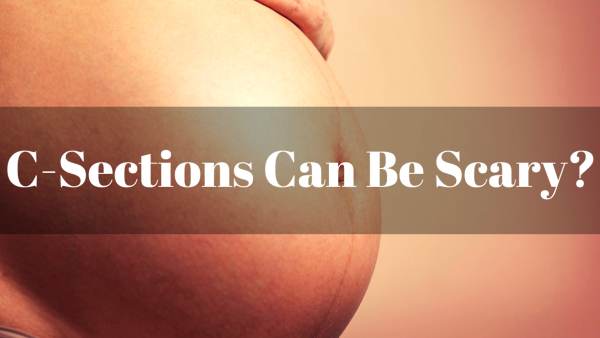The rates of maternal death in the United States are increasing, doctors are looking for ways to save mothers’ lives and reduce complications during childbirth. One way is to reduce the rates of Cesarean births. Many women are choosing c-sections over vaginal delivery for various reasons. In this new era, we want everything quick. Women have changed and their schedules are much busier than their ancestors. We are no longer just working mothers and wives we are entrepreneurs, CEOs, trailblazers and so much more. This has a huge impact on why c-sections have increased. Why can't we control when we want to have our babies and how?
Over the past decade, c-sections births have risen significantly. According to the CDC, 31% of all births in the United States are performed by c-section. Many women perceive that having a c-section is easier and less painful than a vaginal birth. A mother giving birth in the U.S. is about three times as likely to die as a mother in Britain and Canada. Women are dying at an alarming rate in the US from childbirth especially women of color. The rate of women nearly dying almost tripled between 1993 and 2014, according to the CDC. Why is this happening in one of the richest countries in the world, as we tend to say? A study in the American Journal of Obstetrics and Gynecology found the reason a cesarean section has a higher rate is that it's a surgery, and surgery has some risks. Research shows that when a c-section is elective and performed without a medical need, the risks of complications are higher than delivery through vaginal birth.
I remember when I was growing up if a woman had a c-section it was because there were complications during vaginal birth and it was a necessity, but nowadays hospitals are allowing patients to have a choice, but at what cost? In no way am I against having a c-section. I too wanted a c-section before I knew about the complications. My reasons were purely selfish, like not wanting anything that big going through my vagina, or alleviating the pain that comes with pushing a baby out. A c-section seemed like it would have eliminated that painful part at that moment but what a woman has to endure afterward is quite frightening. Some complications that can occur during or after a c-section include heavy bleeding, damage to the bladder or intestines, major infections of the uterus, kidneys, lungs, or other areas, opening up of the skin incision, blood clots around the uterus or in the leg veins or lungs, an inability of the blood to clot, and damage to the uterus that makes future childbirth more dangerous.
Serena Williams had to have an emergency c-section due to a plummeting heart rate that reached dangerously low levels during contractions. Having had suffered from blood clots in the past, Serena knew she was experiencing a similar reaction, so she demanded a CT scan and a heparin drip after feeling a sudden shortness of breath while recovering. Yet when she voiced her concerns the nurses ignored her requests. After repeatedly insisting something was wrong, the doctors finally listened. If she wasn't Serena Williams I believe that she would have died.
There are many women who need to have a c-section due to various medical reasons but if you're just having a c-section out of convenience please do your research on the hospital you are electing to have your baby in and be sure that they are well equipped to handle anything in case something goes wrong. Some hospitals elect for their patients to have c-sections over vaginal births due to the cost. It's more expensive to have a cesarean. Talk to your doctor beforehand about any complications that may occur (if she is a woman doctor ask her if she had a c-section and why). Speak to other women who have undergone cesarean childbirth and listen to your body. If you feel that something is wrong trust your instincts and make it known. If you don't need to have a c-section than you probably shouldn't. This could be a matter of life and death and once you have a c-section there is a 90% chance that your next pregnancy will have to be a c-section as well.
Sources:
http://www.lochhavenobgyn.com/patient-resources/educational-articles/cesarean-section
https://www.parents.com/pregnancy/giving-birth/cesarean/why-you-dont-want-a-c-section/
https://www.acog.org/Clinical-Guidance-and-Publications/Committee-Opinions/Committee-on-Obstetric-Practice/Cesarean-Delivery-on-Maternal-Request?IsMobileSet=false


